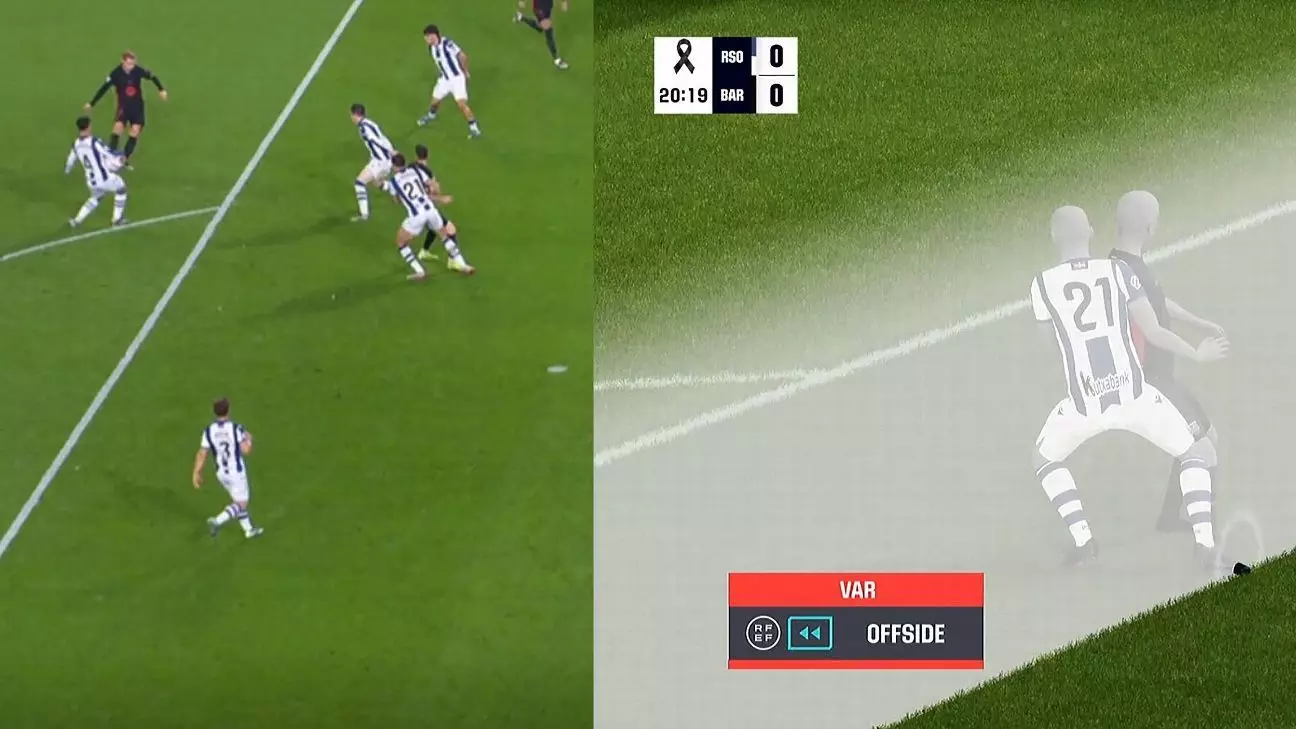In the world of football, technology has increasingly become an essential component in ensuring fair play. However, with the introduction of ambitiously designed systems like semi-automatic VAR (SAOT) in La Liga, questions arise as to whether the intended goals of these technologies are being met. Following the controversial disallowed goal by Robert Lewandowski in a recent match against Real Sociedad, the club’s sporting director, Deco, has called for greater transparency regarding the decision-making processes involved. This incident raised important discussions not only about the specific goal but also about the overarching efficacy of VAR technology itself.
Lewandowski’s 14th-minute strike was ruled offside, a decision made with the aid of SAOT technology, which claimed that the striker’s toe was marginally beyond the last defender. Real Sociedad capitalized on this for a narrow victory. Post-match reactions were dominated by criticism of the decision, with Coach Hansi Flick labeling it a “huge mistake.” The conflicting opinions reflect a mounting frustration among players, coaches, and fans alike, highlighting a growing disconnect between technology and human interpretation in officiating.
Deco’s statements on the subject underscore a fundamental issue with how SAOT is being implemented. He remarked on the uncertainty surrounding the term “semi-automatic,” questioning whether it indeed provides the intended clarity and efficiency. Deco stated, “I don’t understand if it’s semi-automatic, not automatic…someone will have to explain it to us.” His words resonate with many who feel that while technology was supposed to enhance reliability in officiating, it is still vastly reliant on human interpretation, which can lead to inconsistencies and controversial calls.
Further complicating this matter is the complex nature of the technology itself, which employs extensive tracking capabilities to ascertain offside positions. With an array of sensors analyzing up to 29 data points on each player, the theoretical capability exists for super-precise calls. Yet, this precision appears to falter in practice, as evidenced by the Lewandowski incident. While the Refereeing Committee in Spain has maintained that the decision was correct, the lack of accessible clarity leaves fans and teams bewildered over the operational aspects of SAOT.
The ramifications of such decisions extend beyond just one team’s interests. Deco rightly points out that if the technology fails, it could potentially harm any team on any given day. This issue illustrates a systemic risk that La Liga must address—how to balance the advantages brought forth by technology without allowing them to overshadow the human element that has always been at the heart of the game. The critical emphasis is on improving the overall system for everyone’s benefit, as missteps made today could echo into future matches.
Deco’s quest for clarity highlights a need for leagues worldwide, including La Liga, to evaluate the integrations of technology in sports thoroughly. With other major competitions, such as the Premier League, choosing to delay the rollout of similar technologies, it raises questions about the overall readiness of governing bodies to implement such systems effectively.
In addition to the VAR controversy, another subplot within Barcelona’s recent match was the absence of 17-year-old Lamine Yamal, who has already established himself as an essential player for the team. His exclusion during matches has raised eyebrows, especially considering the increasing dependence of the team on the young star. Deco expressed that comparisons to legendary players like Lionel Messi may be both a privilege and a burden for a player like Yamal. While it is natural to draw parallels, particularly given the context of Barcelona’s storied history, it is crucial to recognize Yamal’s unique potential and situation.
The club is in a transitional phase, with young talents like Yamal finally receiving opportunities to showcase their abilities amidst a significant rebuilding process. While making comparisons to past legends can elevate a player’s profile, it can also create expectations that may not align with their personal development and circumstances.
As the debate over VAR continues, it is essential for football organizations to prioritize clarity and consistency in officiating decisions. The Flamengo method not only safeguards the game’s integrity but also reinforces trust among players, coaches, and fans. For Barcelona, this moment serves as a critical learning opportunity, shedding light on the dual responsibility of embracing technology while also nurturing the growth of young talents who may one day redefine the club’s legacy. The future of football, after all, hinges on finding that delicate balance between tradition and innovation.

